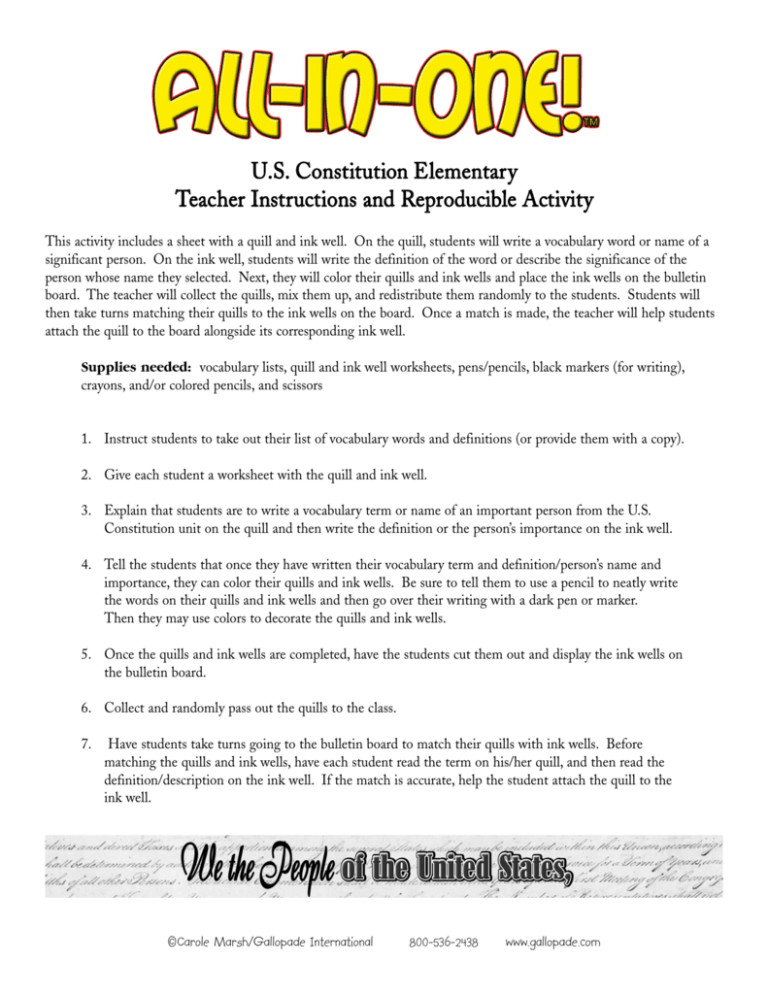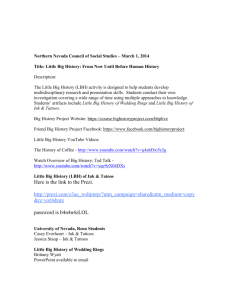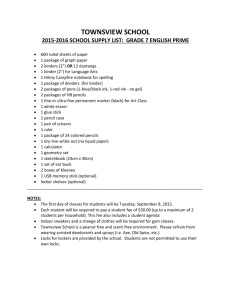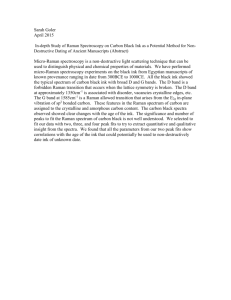U.S. Constitution Elementary Teacher Instructions and Reproducible
advertisement

U.S. Const it ut ion E lementar y Teac her Inst r uct ions and Reproducible Act ivit y This activity includes a sheet with a quill and ink well. On the quill, students will write a vocabulary word or name of a significant person. On the ink well, students will write the definition of the word or describe the significance of the person whose name they selected. Next, they will color their quills and ink wells and place the ink wells on the bulletin board. The teacher will collect the quills, mix them up, and redistribute them randomly to the students. Students will then take turns matching their quills to the ink wells on the board. Once a match is made, the teacher will help students attach the quill to the board alongside its corresponding ink well. Supplies needed: vocabulary lists, quill and ink well worksheets, pens/pencils, black markers (for writing), crayons, and/or colored pencils, and scissors 1. Instruct students to take out their list of vocabulary words and definitions (or provide them with a copy). 2. Give each student a worksheet with the quill and ink well. 3. Explain that students are to write a vocabulary term or name of an important person from the U.S. Constitution unit on the quill and then write the definition or the person’s importance on the ink well. 4. Tell the students that once they have written their vocabulary term and definition/person’s name and importance, they can color their quills and ink wells. Be sure to tell them to use a pencil to neatly write the words on their quills and ink wells and then go over their writing with a dark pen or marker. Then they may use colors to decorate the quills and ink wells. 5. Once the quills and ink wells are completed, have the students cut them out and display the ink wells on the bulletin board. 6. Collect and randomly pass out the quills to the class. 7. Have students take turns going to the bulletin board to match their quills with ink wells. Before matching the quills and ink wells, have each student read the term on his/her quill, and then read the definition/description on the ink well. If the match is accurate, help the student attach the quill to the ink well. ©Carole Marsh/Gallopade International 800-536-2438 www.gallopade.com ©Carole Marsh/Gallopade International 800-536-2438 www.gallopade.com U.S. Constitution Vocabulary Words assemble: to come or bring together in a group Congress: the lawmaking body of the federal government checks and balances: limits imposed on all branches of government by giving each the right to amend acts of the other branches, so that no one branch becomes too powerful Constitution: the document which establishes the fundamental principles of American government House of Representatives: a lawmaking group of Congress members from each state determined by each state’s population Supreme Court: the highest court in the United States, made up of nine judges appointed by the President electoral college: the group that meets after the public votes in the presidential election to cast ballots for the President and Vice-President; this actually decides the election separation of powers: the system of dividing the powers and duties of a government into different branches treaty: a formal agreement between two or more nations Alexander Hamilton: New York’s delegate at the Constitutional Convention; after the Convention, helped to write the Federalist Papers, which were written to persuade voters to ratify the Constitution delegate: person who acts for or represents others founding fathers: people responsible for establishing the United States government veto: to cancel or postpone a bill or decision; the President has the power to veto bills passed by Congress amend: to change the meaning or wording of a bill, motion, or official document, such as the Constitution, by formal procedure White House: the official residence of all the presidents of the United States, except for George Washington executive branch: the part of the federal government that makes sure the laws are obeyed legislative branch: the part of the federal government that makes laws judicial branch: the part of the federal government that decides arguments about the meaning of laws, how they are applied, and whether they break the rules of the Constitution ©Carole Marsh/Gallopade International Benjamin Franklin: one of Pennsylvania’s delegates at the Constitutional Convention; the oldest signer of the Constitution James Madison: one of Virginia’s delegates at the Constitutional Convention; known as “the father of the Constitution;” 4th President of the United States George Washington: President of the Constitutional Convention; 1st President of the United States U.S. Capitol: located on “Capitol Hill” in Washington, D.C., this has been the home of Congress and the House of Representatives since 1800 Independence Hall: located in Philadelphia, Pennsylvania; the Constitution was written here, along with other significant documents Bill of Rights: the first ten amendments to the Constitution, added on December 15, 1791 800-536-2438 www.gallopade.com








